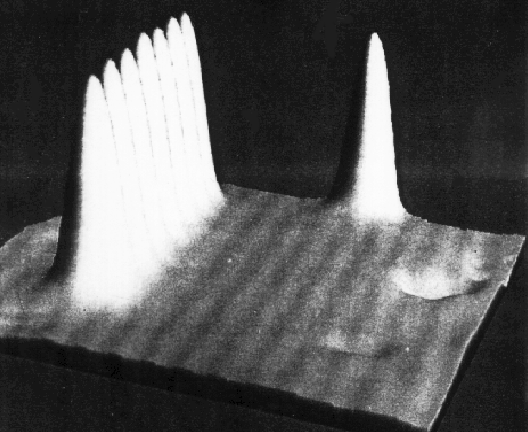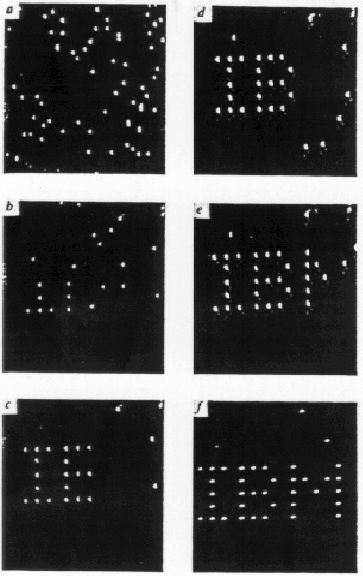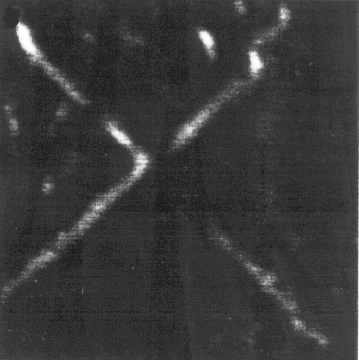
In 1981, Gerd Binnig and Heinrich Rohrer of the IBM Zürich Research Laboratory invented the Scanning Tunneling Microscope. This device, easily one of the most elegant and unanticipated inventions of the century, allowed imaging of individual atoms, and won Binnig and Rohrer the Nobel Prize in Physics for 1986.
In 1985, Binnig and Christoph Gerber of IBM Zurich, along with Calvin Quate of Stanford, invented the atomic force microscope. This allowed imaging nonconductive matter such as living cells to molecular (although not currently atomic) resolution.
Since then, every year has seen new inventions in the rapidly growing field of scanning probe microscopes. They're now imaging bits on magnetic surfaces, measuring temperature at microscopic sites, and monitoring the progress of chemical reactions.
Recently, IBM San Jose used a scanning tunneling microscope to, in Feynman's words, put the atom right where the chemist says.
Here's a picture of xenon atoms on a nickel crystal, lined up in a row by pushing them into place with an STM tip. Remember, those bumps are individual atoms, and they've been moved precisely into position, in a row, one half nanometre from each other.

You can not only put atoms right where the chemist wants them, you can put them right where the marketing department says to, as well.
Here, from the same paper, is a sequence of pictures showing a bunch of randomly positioned xenon atoms being aligned to spell out the name of the sponsor.

Again, each dot in this picture is a single atom, and the letters are 5 nanometres tall.

Here's an illustration from a paper published a few weeks before the IBM result. The bottom picture shows an X drawn with an atomic force microscope on material adsorbed onto a zeolite crystal surface. The X is 8 nanometres tall, and it remained intact for the 45 minutes it was monitored after being drawn there.
This experiment was done with a desktop instrument no bigger or more complicated than a compact disc player.
Editor: John Walker